I made a very, very frilly stomacher to go with my Frou Frou Francaise!

I based it on this stomacher, from the MFA Boston:
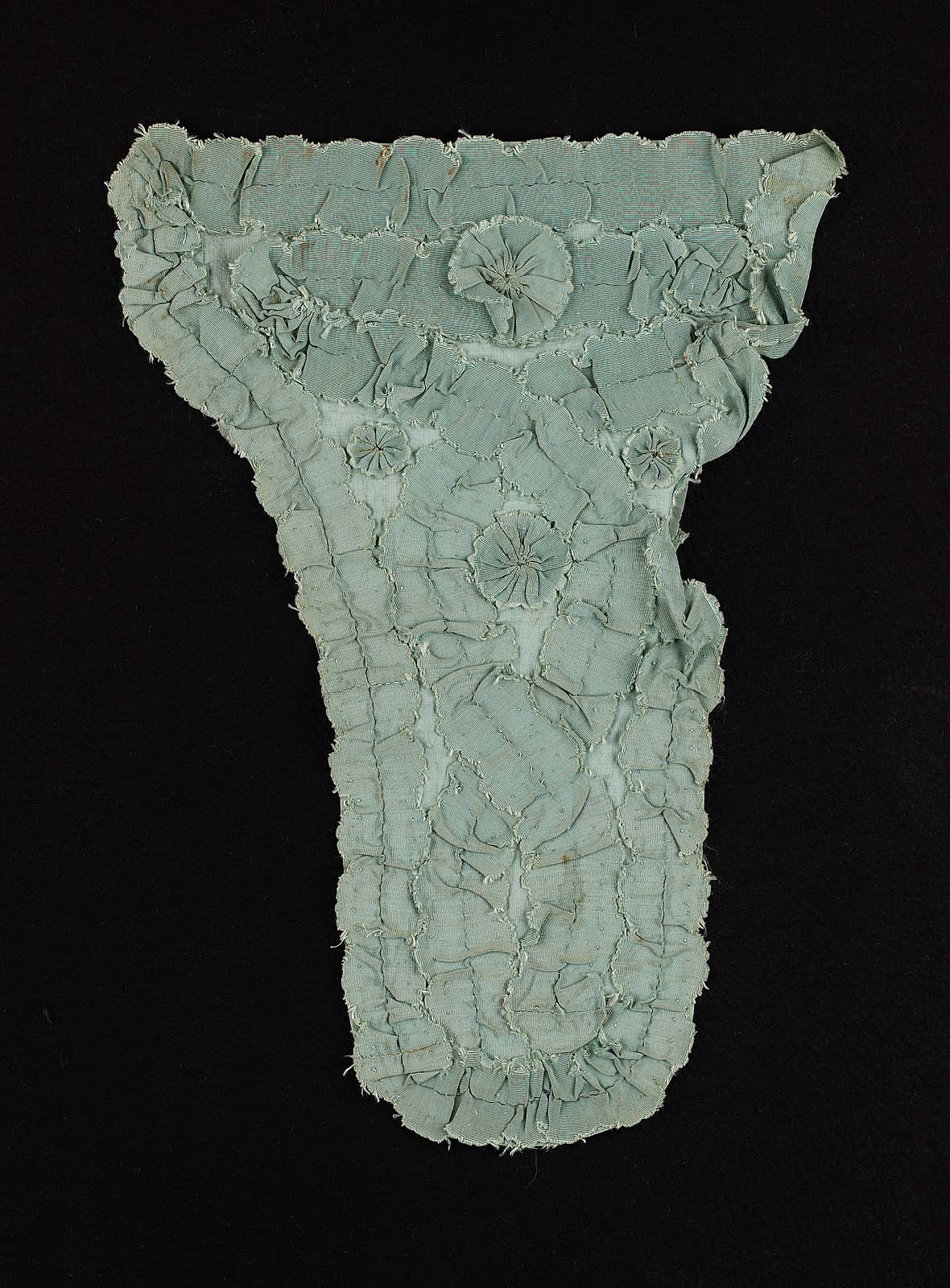
Stomacher, American, mid 18th century, silk , Boston Massachusetts, MFA Boston 49.918
I was searching for stomacher inspiration to go with my Frou Frou Francaise, because I wanted something a little more dynamic and interesting than the usual stripes-of-ruffles or bows (not that they aren’t charming, but this one just needed something different), and I stumbled across this one, and it was perfect, and (amazingly) it’s also the only extant plain blue silk stomacher that I know of.
I realised that it would be the perfect project for the HSF Challenge #8: Extant originals, where you copy a period garment that is still in existence.
I tried to replicate the exact shape & dimensions of the stomacher, but I just couldn’t get it to pin onto me and into my francaise and looking right.
So instead I worked with a shape and dimensions that did fit my body and my dress, and adapted the trim to fit.
To make my stomacher first I made linen buckram for the backing:
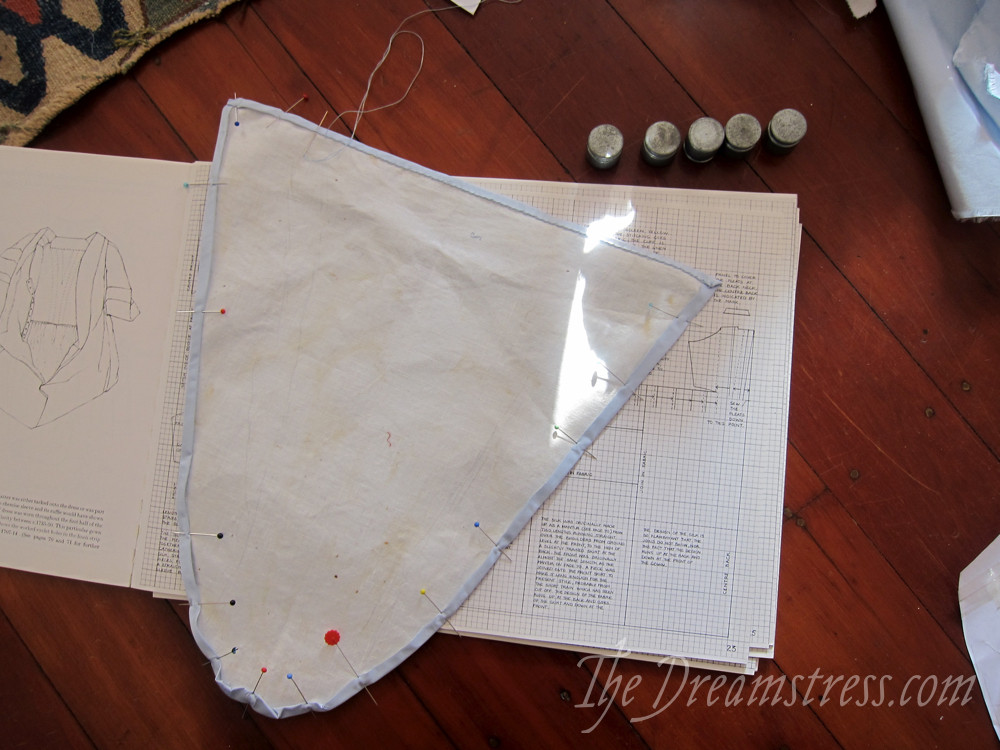
Making Buckram:
Burnley & Trowbridge have an excellent youtube tutorial on how to make your own, which I mostly followed, but had to adapt slightly based on what I could get in NZ in a reasonable timeframe.
Gum tragacanth is the most easily accessible modern ingredient that was used in 18th century buckram making, but I couldn’t find any in Wellington, and I did some research and it turns out that most stuff that is sold as GT is actually xanthan gum anyway. That you can get in Wellington – it’s not historically accurate, but I decided to try it to see if it would work.
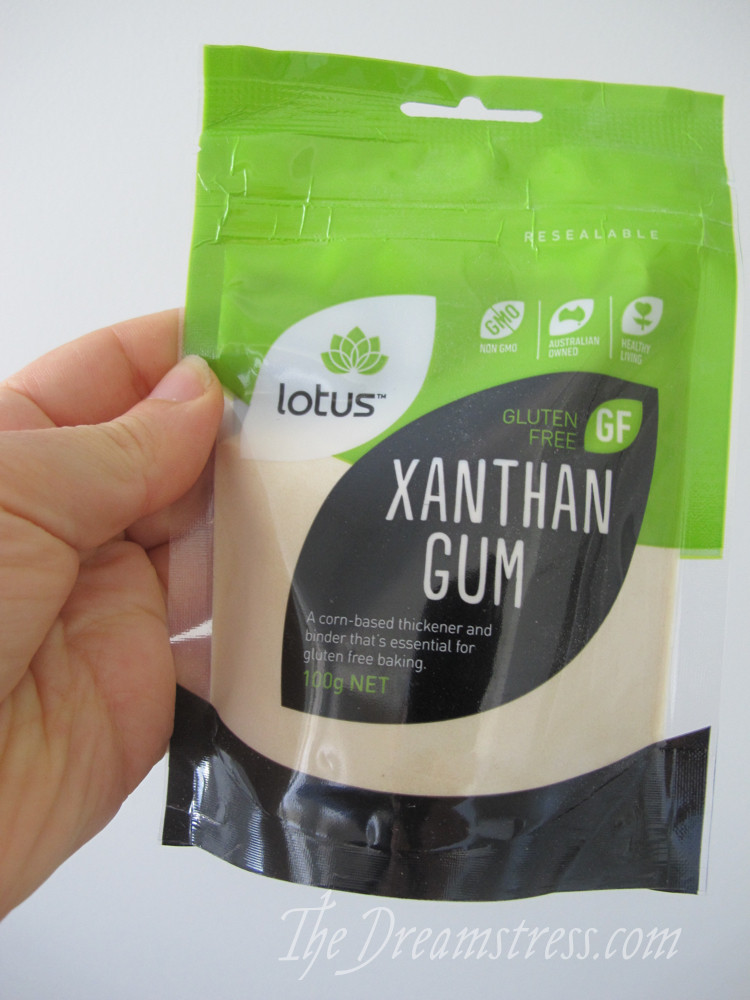
I mixed it with hot water:
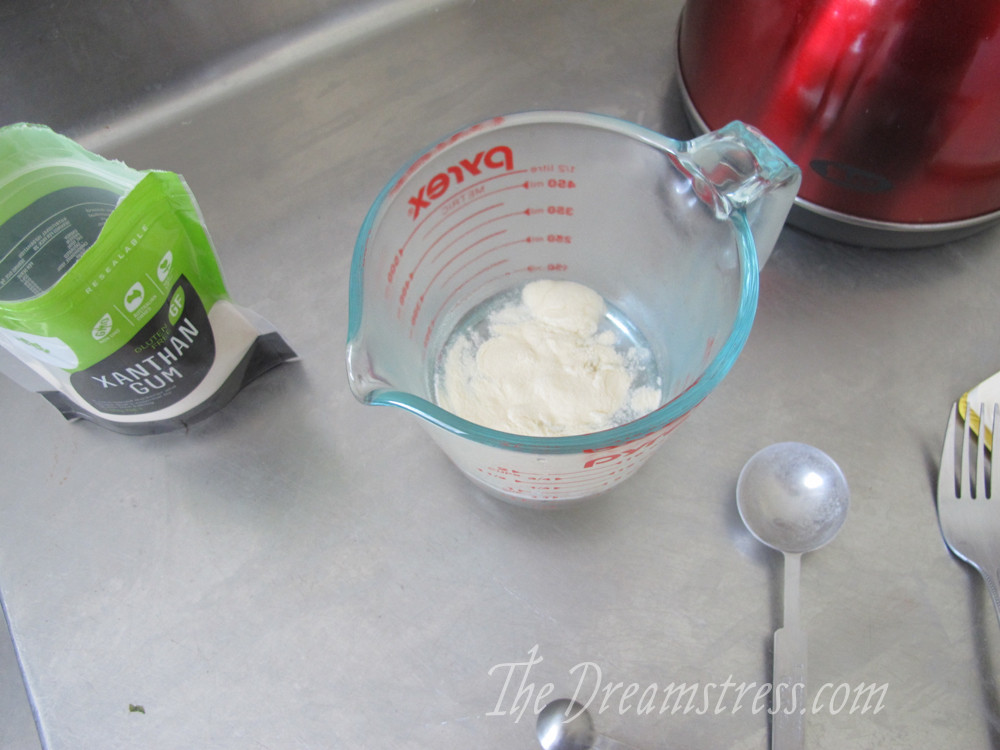
Probably not enough hot water: 2T in half a cup of water made a VERY thick and gloopy paste.
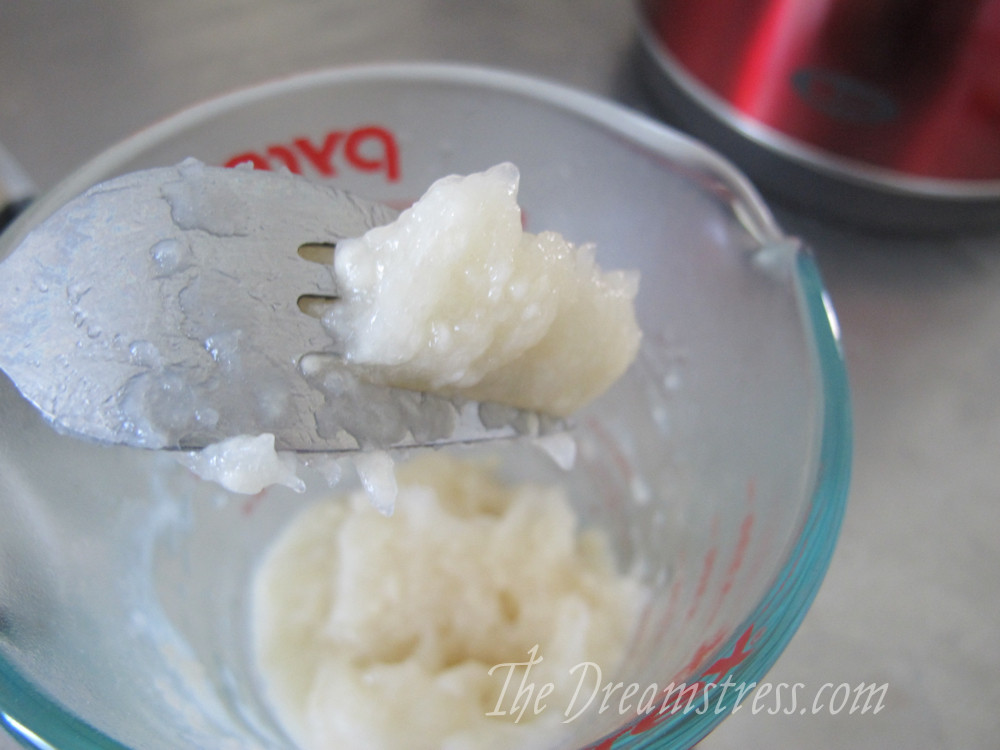
But I decided to try it as it was, so I dropped it on my linen…
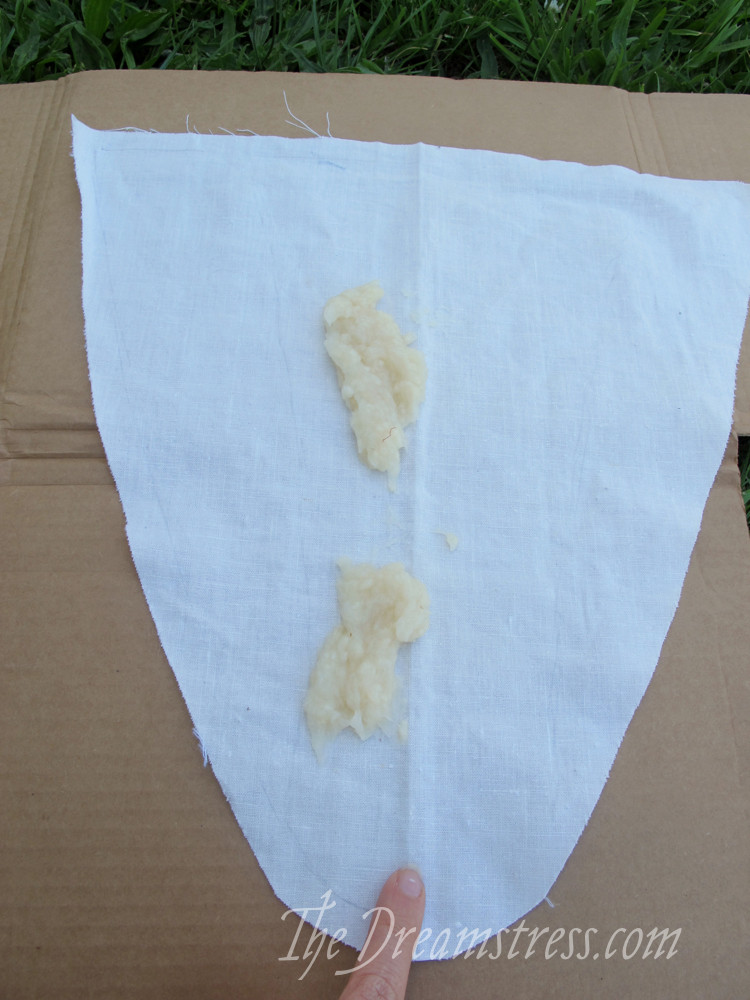
….and spread it around. It was quite gross and mucos-y.
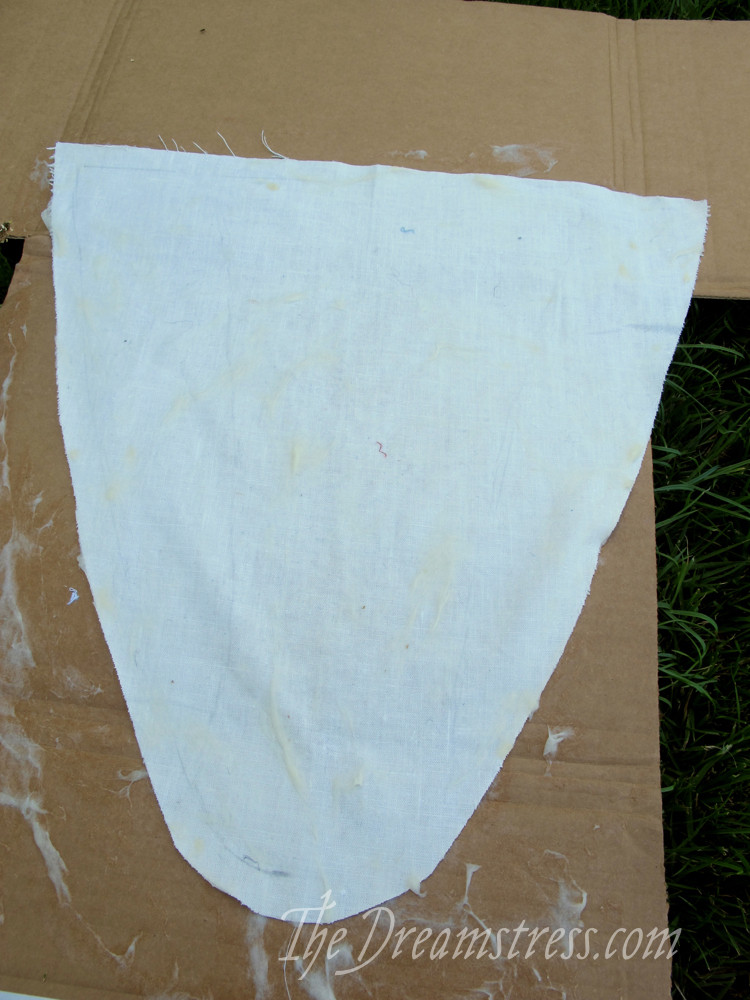
And then left it to dry in the sun:
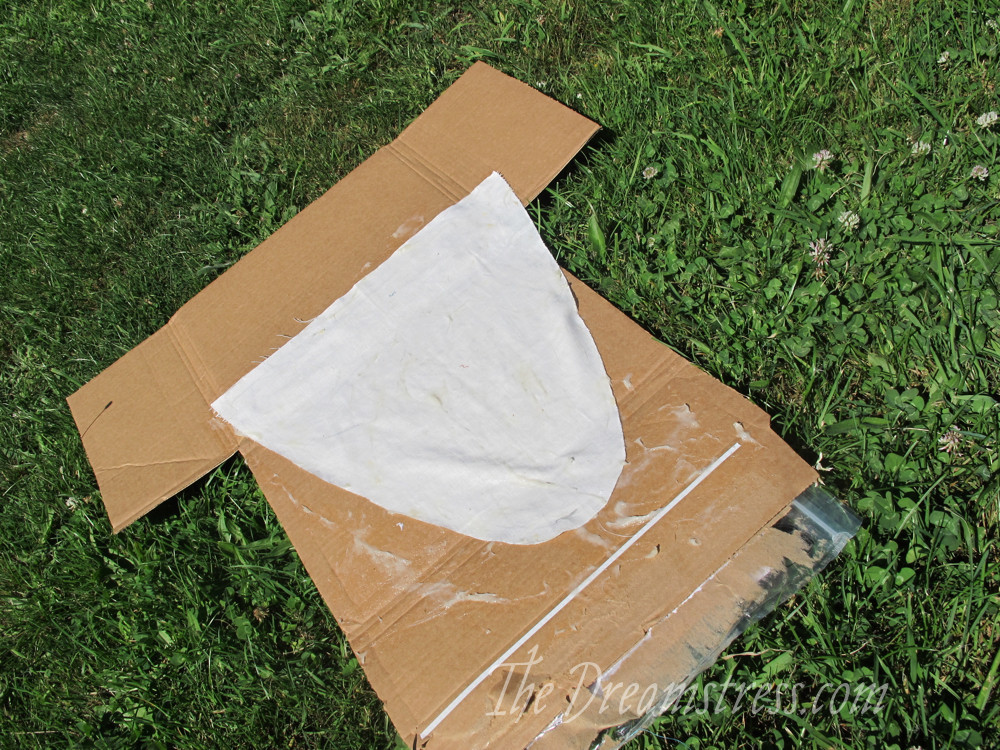
And the end result was very buckram-y.
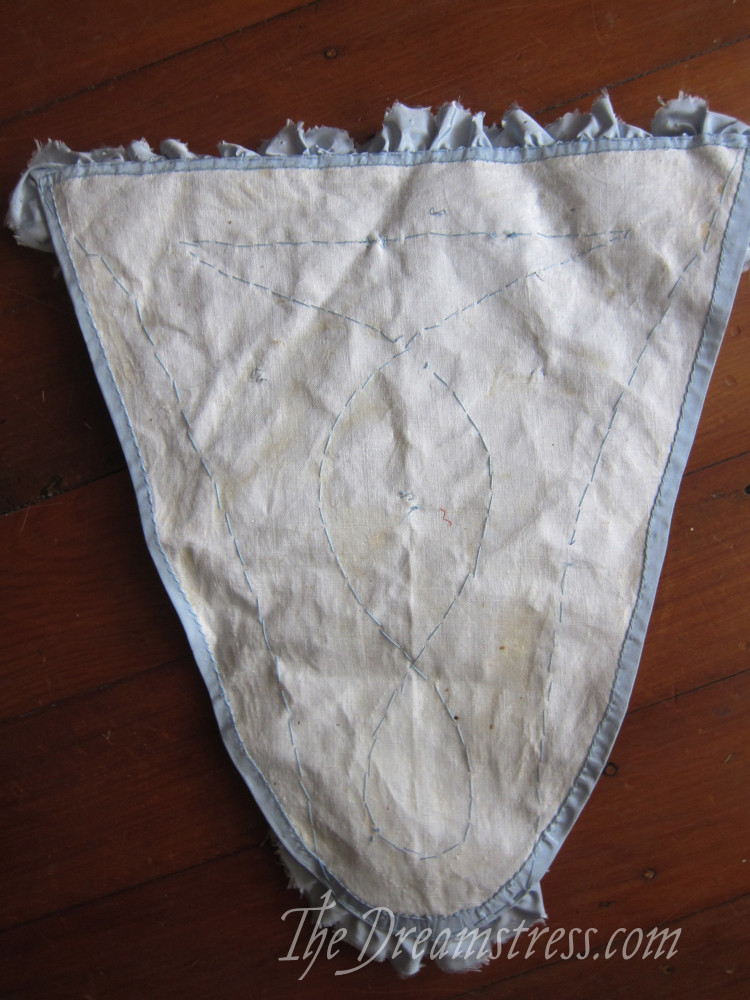
The next time I would definitely add less XG, and make my buckram as a whole cloth, and then cut my fabric later.
Making my stomacher:
To make the stomacher I cut a piece of silk 1.5cm wider than my buckram base on all sides. I folded the excess silk over the edges of the buckram base:
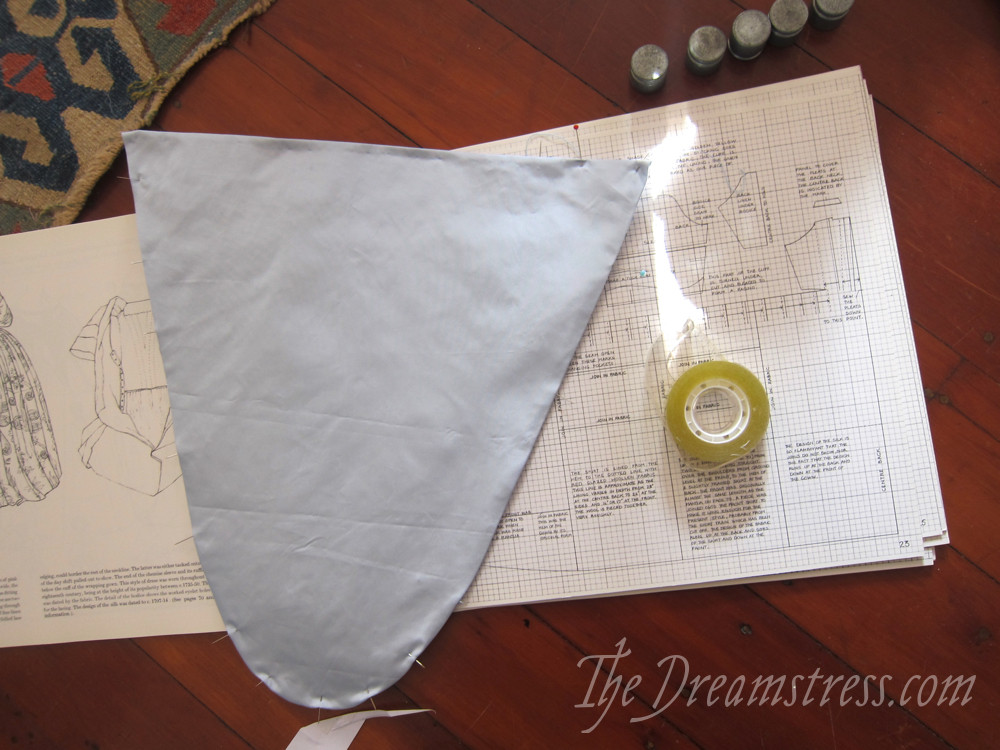
And then hemstitched it down, so the stitches caught only through the buckram, not through the outer silk.

For the trim, I took the MFA Boston image, and scaled it up to the dimensions they give for the stomacher.
I then printed it out, and used the design to develop one that fit on my slightly shorter, slightly wider stomacher. I transferred the design to my stomacher with pinpricks.
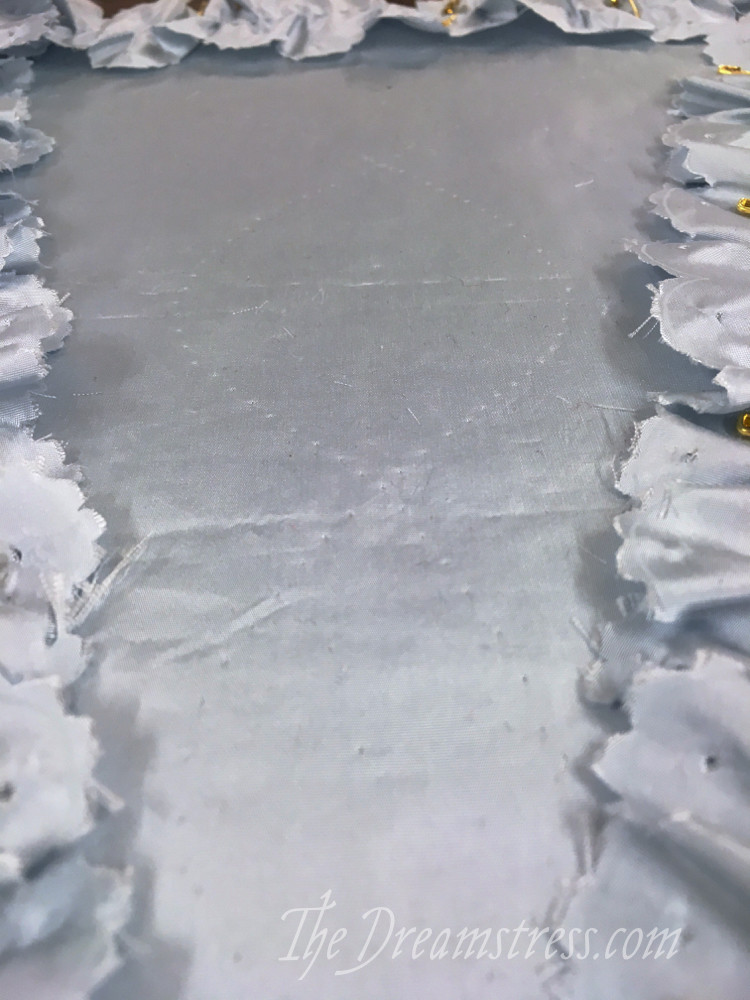
I hand-cut scalloped trim from my silk (I dream of owning a real pinking chisel, but as far as I know no-one is making replicas at the moment, and original ones don’t come up very often).
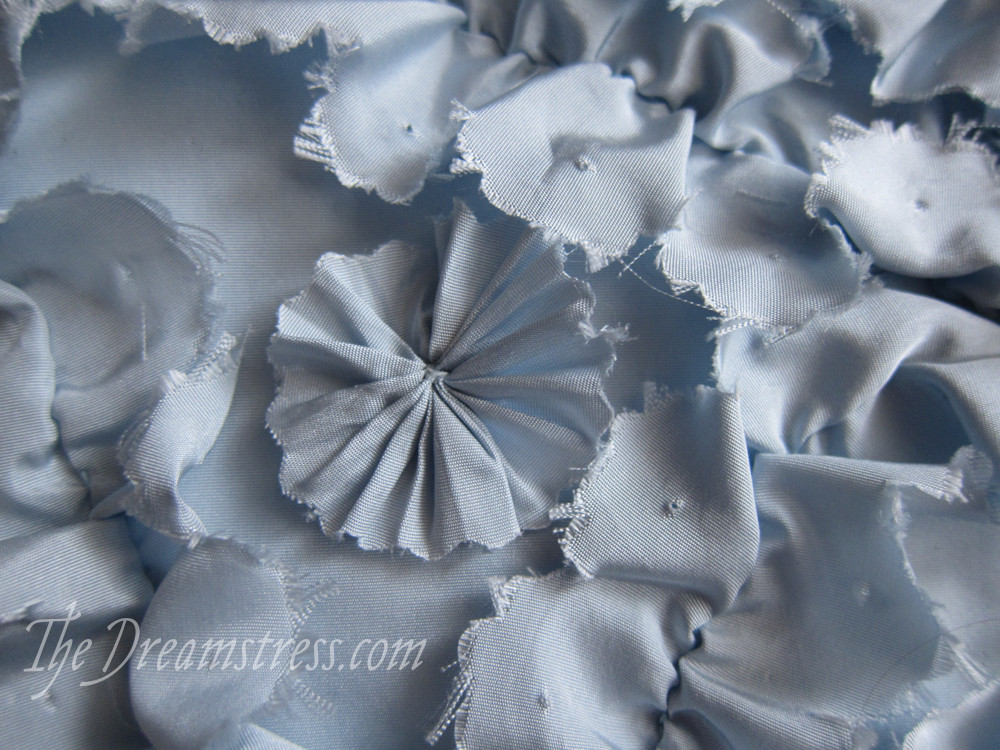
The original appears to have small holes punched in the ruffles as well. I experimented a bit, and finally discovered that the sort of hollow-needle that tag guns (the ones that put in those plastic clothing tags in shops) use was exactly right for punching a tiny hole that still lasted.
With scallops cut and holes punched, I ruched my trims with whipped gathers. My trim did come out being much frillier and more gathered than the original: I think that’s both a combination of too-much gathers, and the original being crushed and flattened with age.
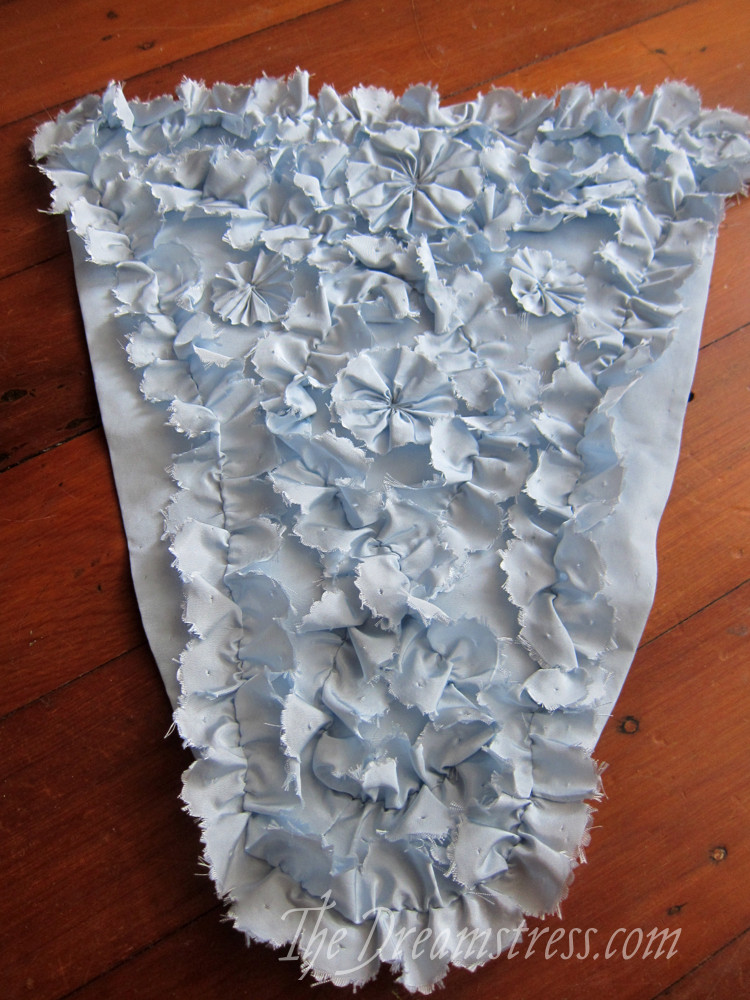
I’m also wondering if there is a chance that the originals ruffles are sewn down along the sides as well. Maybe that’s what I’m seeing instead of punched holes…

Stomacher, American, mid 18th century, silk , Boston Massachusetts, MFA Boston 49.918
So my stomacher isn’t quite as close to the original as I’d hoped, but at least it’s attractive and works.
And the HSF info…
What the item is: a 1760s stomacher
Which extant original did you copy: a mid 18th century stomacher from the MFA Boston, 49.918
Material: silk taffeta, silk thread, and linen buckram (linen & gum)
Pattern: none, based on period examples.
Year: ca. 1760
Notions: silk thread
How historically accurate is it? Pretty close! But not perfect, because it’s not a perfect match, and the xantham gum etc.
How close is it to the original? My blue is less blue-green, and I wasn’t able to get the exact dimensions of the original to work on me/with my francaise, so I used a different shape base, and copied the outline of the original stomacher for my trim. My trim is much more ruffly and three dimensional – I’m trying to decide if that’s because the original has been flattened with age, or if the ruffles are actually sewn down.
Hours to complete: About 15
First worn: Not yet.
Total cost: About $10, if you count how much of the silk taffeta I used.

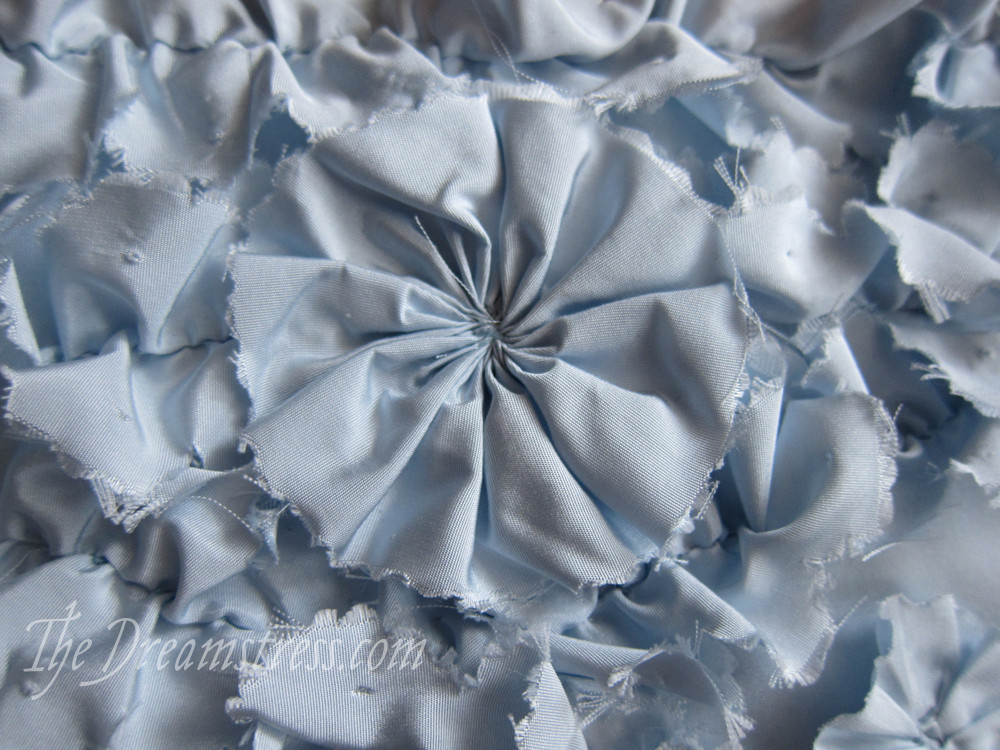
There is definitely some tacking down, perpendicular to the run of the trim every few inches or so. Also, the original *is* very badly flattened.
Having a squinny at the Boston stomacher, I see stitching rather than punching.
Your stomacher is so pretty! You did an excellent job, in my inexpert opinion.
Thank you! 🙂
Ooo, exciting! I love your stomacher! My first though was that the original had punched holes as well, though after reading your post I can see how they could also be interpreted as stitch lines. AND, I am so excited to see that you’ve recently made buckram! I’ve decided to make 1790s stays using my own homemade buckram and just did the stiffening on cardboard/drying in the sun bit last week, also referencing the Burnley and Trowbridge video. The whole project is pretty low on the to-do list, but I’m hoping to post about the steps as I go so hopefully there will be a post about buckram making somewhat soon.
Best,
Quinn
Oooh, exciting! I want to make buckram stays too, but I’m worried about how the buckram will react when exposed to humidity or any body moisture. Any thoughts?
quirkyscience.comIf it gets damp, it will soften, as will most of the natural gums and starches.
http://www.quirkyscience.com/diy-milk-based-casein-glue/ Casein glue might work – it’s been known since the middle ages or earlier. I don’t know how water resistant it is.
If you want a permanently stiff, damp-resistent buckram, white craft flue diluted with water and brushed on.
Japanese fabrics are sized and stiffened with soy milk, which soaks into the fibers and polymerizes into a quite permanent natural “plastic”. It’s what gives old kimono silk that lovely hand.
It’s turned out really lovely, and I rather like the look of the little punched holes. It does look like the original was much fluffier when it was new, and has simply got flattened over time. Assuming your silk is similar to the original silk, I would think yours is a good representation of what the original would have looked like.
Fascinating process! Thank you for sharing. Now I’m going to make a better stomacher for my 18th C gown. Still getting the stays to work, then the under-clothes, so, very slow … im’s a snail to your hare!
So fluffy! 🙂
There are scallop rotary cutters that work with the rotary fabric cutters. Unfortunately, the scallops they make are very small.
I have them, and we did try, but unfortunately they won’t cut small scallops with scallop edges, like my trim – the turns are just to tiny for the rotary cutter.
It is lovely and SO ruffly!
(As an aside, there are several people in the UK making pinking chisels for re-enactment use. The Tudor Tailor stocks a set on their etsy store. Dave Budd also makes them – he has a website (Dave Budd Handmade Tools).)
so frilly and gorgeous!
Gum tragacanth also used to be used to make a hair dressing (a bit similar to styling gel but not quite so rigid, and also with excellent conditioning properties). It’s hard to dissolve though. Back in the late 70s I got some from my local chemist, but I don’t know where you’d get it now.
I actually found this page looking for information about clothing tags. Obviously tag guns shouldn’t do that to a fabric. But I wanted to stop for a moment and say I really like what you did with the stomacher and how it turned out. Bravo!